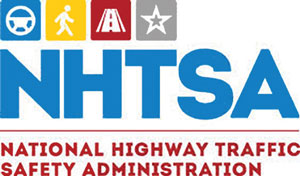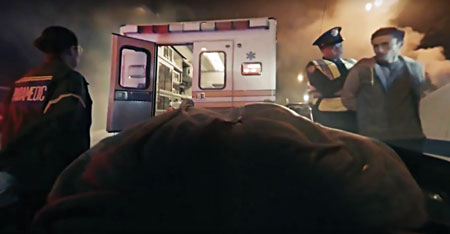

Every day, almost 29 people in the United States die in alcohol impaired vehicle crashes—that’s one person every 50 minutes in 2016. Drunk driving fatalities have fallen by a third in the last three decades, however, drunk driving crashes claim more than 10,000 lives per year.
In 2010, the most recent year for which cost data is available, these deaths and damages contributed to a cost of $44B per year.
Driving after drinking is deadly. Yet it still continues to happen across the United States. If you drive while impaired, you could get arrested, or worse—be involved in a traffic crash that causes serious injury or death.
Approximately one-third of all traffic crash fatalities in the United States involve drunk drivers with blood alcohol concentrations [BACs] of .08 or higher. In 2016, there were 10,497 people killed in these preventable crashes. In fact, on average over the 10-year period from 2006-2016, more than 10,000 people died every year in drunk driving crashes.
In every State, it’s illegal to drive with a BAC of .08 or higher, yet one person was killed in a drunk driving crash every 50 minutes in the United States in 2016.
Men are more likely than women to be driving drunk in fatal crashes. In 2016, 21 percent of males were drunk in these crashes, compared to 14 percent for females.
Driving a vehicle while impaired is a dangerous crime. Tough enforcement of drunk-driving laws has been a major factor in reducing alcohol impaired driving deaths since the 1980s. Charges range from misdemeanors to felony offenses, and penalties for impaired driving can include driver’s license revocation, fines, and jail time. It’s also extremely expensive. A first time offense can cost the driver upwards of $10,000 in fines and legal fees.
Some States require offenders to install ignition interlock devices at the driver’s own expense. An ignition interlock device is a breath test device connected to a vehicle’s ignition. The vehicle will not start unless the driver blows into the interlock and has a BAC below a pre-set low limit, usually .02 g/dL. NHTSA strongly supports the expansion of ignition interlocks as a proven technology that keeps drunk drivers from getting behind the wheel.
Alcohol is a substance that reduces the function of the brain, impairing thinking, reasoning and muscle coordination. All these abilities are essential to operating a vehicle safely.
As alcohol levels rise in a person’s system, the negative effects on the central nervous system increase, too. Alcohol is absorbed directly through the walls of the stomach and small intestine. Then it passes into the bloodstream where it accumulates until it is metabolized by the liver.
Alcohol level is measured by the weight of the alcohol in a certain volume of blood. This is called Blood Alcohol Concentration, or BAC. At a BAC of .08 grams of alcohol per deciliter of blood (g/dL), crash risk increases exponentially. Because of this risk, it’s illegal in all 50 States, the District of Columbia and Puerto Rico to drive with a BAC of .08 or higher.
However, even a small amount of alcohol can affect driving ability. In 2016, there were 2,017 people killed in alcohol related crashes where drivers had lower alcohol levels (BACs of .01 to .07 g/dL).
BAC is measured with a breathalyzer, a device that measures the amount of alcohol in a driver’s breath, or by a blood test.
| Blood Alcohol Concentration (BAC) in G/DL | Typical Effects |
Predictable Effects on Driving |
|---|---|---|
|
Some loss of judgment; relaxation, slight body warmth, altered mood | Decline in visual functions (rapid tracking of a moving target), decline in ability to perform two tasks at the same time (divided attention) |
|
Exaggerated behavior, may have loss of small muscle control (e.g., focusing your eyes), impaired judgment, usually good feeling, lowered alertness, release of inhibition | Reduced coordination, reduced ability to track moving objects, difficulty steering, reduced response to emergency driving situations |
|
Muscle coordination becomes poor (e.g., balance, speech, vision, reaction time, and hearing), harder to detect danger; judgment, self-control, reasoning, and memory are impaired | Concentration, short term memory loss, speed control, reduced information processing capability (e.g., signal detection, visual search), impaired perception |
|
Clear deterioration of reaction time and control, slurred speech, poor coordination, and slowed thinking | Reduced ability to maintain lane position and brake appropriately |
|
Far less muscle control than normal, vomiting may occur (unless this level is reached slowly or a person has developed a tolerance for alcohol), major loss of balance | Substantial impairment in vehicle control, attention to driving task, and in necessary visual and auditory information processing |
Through research, public awareness campaigns, and State safety grant programs, NHTSA demonstrates its commitment to eliminating drunk driving. Our programs have consistently reduced alcohol related crash fatalities. We will continue until there are zero drunk-driving crashes on our roadways.
Car crashes are the leading cause of death for teens, and about a quarter of those crashes involve an underage drinking driver. In 2016, young drivers, 16-24 years old, made up 39 percent of drivers involved in fatal alcohol impaired crashes.
To reduce alcohol related fatal crashes among youth, all States have adopted a minimum legal drinking age of 21. NHTSA estimates that minimum drinking age laws have saved 31,417 lives between 1975 and 2016.
Young adults 25-34 make up another 29 percent of fatal alcohol impaired driving crashes. Men are most likely to be involved in this type of crash, with 4 male alcohol impaired drivers for every female impaired driver.

In 2016, there were 4,950 motorcycle riders killed in motor vehicle traffic crashes. Of those, 1,259 (25%) were alcohol impaired (BACs of .08 or higher). In addition, there were 335 fatally injured motorcycle riders who had lower alcohol levels (BACs of .01 to .07 g/dL).
Motorcycle riders have the highest overall rate of alcohol impairment in fatal crashes. In 2016, 25 percent of the motorcycle riders killed were riding impaired.
In 2016, the highest percentages of fatally injured, alcohol impaired motorcycle riders were in the 35 to 39 age group (38%), followed by the 45 to 49 age group (37%), and the 40 to 44 age group (32%).
Repeat offenders who drink and drive are a very real, very deadly problem. Drivers with BACs of .08 g/dL or higher involved in fatal crashes were 4.5 times more likely to have prior convictions for driving while impaired (DWI) than were drivers with no alcohol, 9% and 2%, respectively.
When it comes to drunk driving, it affects more than just the driver. In 2016, approximately 1 in 6 children (14 and younger) died in drunk driving crashes. Fifty-four percent of the time, it was the child’s own driver who was drunk.
In addition to the human toll drunk driving takes on our country, the financial impact is devastating: based on 2010 numbers (the most recent year for which cost data is available), impaired driving crashes costs the United States $44 billion annually.
The National Highway Traffic Safety Administration is responsible for keeping people safe on America’s roadways.